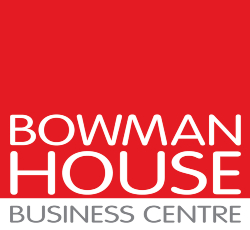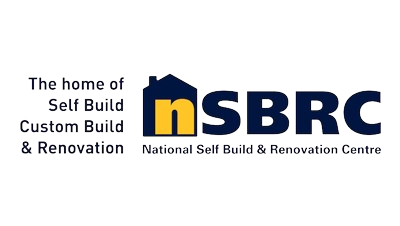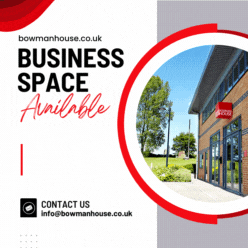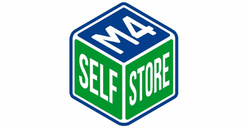In case you missed it see what’s in this section
Let's Talk

Navigating Challenges: How To Ensure Proactive Problem-Solving In Business
Challenges are an inherent part of the business landscape, and every organization, regardless of size or industry, encounters them. However, the way a company approaches and deals with these challenges can make all the difference between stagnation and growth. This article will explore the concept of proactive problem-solving and how it empowers businesses to not only overcome obstacles but also to thrive in an environment of constant change. Proactive problem-solving isn't about predicting the future with uncanny accuracy, but about creating a mindset and a set of strategies that help businesses stay ahead of the curve. Below you will find some of the best strategies you can use to deal with all types of challenges that may arise.
Determine Your Key Performance Indicators
Navigating challenges requires a clear sense of direction. This begins with determining your Key Performance Indicators (KPIs), which serve as the compass guiding your organization's journey. KPIs are quantifiable metrics that reflect various aspects of your business, from financial performance to customer satisfaction and operational efficiency. By carefully selecting and defining your KPIs, you gain the ability to measure progress and identify potential issues well before they become critical roadblocks. For example, if you're in the retail industry, your KPIs might include sales growth, customer retention rates, and inventory turnover. In the realm of manufacturing, you might focus on metrics like production cycle times, defect rates, and supply chain efficiency.
Leverage Technology Technology is a powerful ally in proactive problem-solving. Among the versatile tools available, PDF tools stand out as essential for efficient document management. These tools simplify tasks like document conversion, editing, and organization, reducing manual labor and enhancing accessibility to critical information. Embracing technology equips your organization with the capabilities needed to proactively address challenges and stay ahead in a dynamic business environment. In addition, consider adopting data analytics software to gain insights into your operations, as well as customer relationship management systems to improve communication.
Establish A Feedback Loop
One of the pillars of proactive problem-solving is establishing a feedback loop within your organization. Encourage team members at all levels to share insights, concerns, and ideas regularly. This open channel of communication allows for the early identification of potential challenges. Whether it's a front-line employee noticing a change in customer preferences or a department head sensing shifts in market dynamics, every voice matters. By fostering a culture where feedback flows freely, your organization can act swiftly to address emerging issues, preventing them from escalating into major obstacles.
Encourage Cross-Functional Collaboration
Challenges in business often transcend departmental boundaries. Therefore, encouraging cross-functional collaboration can be a game-changer in proactive problem-solving. When individuals from different departments come together to share their perspectives, it becomes easier to spot potential issues that may be overlooked within siloed units. Cross-functional teams can leverage their collective knowledge and expertise to identify challenges early and develop holistic solutions. By promoting collaboration, your organization can proactively address complex challenges with a multidisciplinary approach, ultimately leading to more effective problem-solving and innovation.
Implement Risk Assessment
Proactive problem-solving involves identifying potential hurdles before they materialize, and this begins with implementing a comprehensive risk assessment process. Your organization should actively identify and evaluate potential risks, both internal and external, that could impact your operations. This assessment should encompass a range of scenarios, from financial downturns to supply chain disruptions. By thoroughly understanding these risks, you can develop strategies to mitigate them effectively. Regularly updating and refining your risk assessment allows your business to adapt to changing circumstances and stay one step ahead in the face of potential challenges.
Align Your Goals
Ensure that your business goals are not only well-defined but also aligned with your overall vision and mission. When your goals are in harmony with your organization's core values, you can create a roadmap that guides decision-making and resource allocation. This alignment simplifies the identification of potential challenges, as any deviations from your strategic path become apparent. By consistently measuring your progress against these aligned goals, you can proactively adjust your strategies and tactics to stay on course and navigate challenges effectively.
Build Resilience
Resilience is the hallmark of organizations that excel in proactive problem-solving. In a world of constant change, building resilience means being able to bounce back from setbacks and adapt to new circumstances. This involves not only planning for the unexpected but also fostering a culture that embraces change as an opportunity for growth. Encourage employees at all levels to embrace challenges as learning experiences and empower them to make decisions that promote adaptability and resilience. By instilling a resilient mindset in your organization, you can proactively face challenges with confidence and turn them into stepping stones toward greater success.
Ensure Effective Crisis Management
No business is immune to unexpected crises, but proactive problem-solving involves being prepared for them. To ensure your organization can effectively navigate turbulent times, it's essential to establish a robust crisis management plan. This plan should delineate clear roles and responsibilities, define communication channels, and outline response protocols for various crisis scenarios. Whether it's a financial downturn, a data breach, or a natural disaster, a well-prepared crisis management plan can mean the difference between chaos and a coordinated response. Proactive organizations not only develop these plans but also regularly test and refine them, ensuring that they are ready to face any challenge that comes their way.
Monitor And Evaluate The End Result
To determine the effectiveness of your strategies, it's crucial to establish clear metrics for success. Regularly track and analyze data related to the problems you've tackled and the solutions you've implemented. For example, you will need to determine if your efforts have yielded the desired outcomes, of if they revealed unexpected consequences. By meticulously evaluating the end result, your organization can fine-tune its approaches, learning from both successes and setbacks. This iterative process of assessment and refinement ensures that you remain agile and capable of addressing future challenges with even greater precision.
Engage With Customers And Stakeholders
It’s also important to actively engage with your customers and stakeholders, recognizing that their insights and perspectives are invaluable. These individuals and entities have a direct relationship with your products, services, and brand, making their feedback essential for growing your business. To proactively address potential challenges, establish meaningful channels of communication, such as surveys, focus groups, and direct interactions. By listening attentively to their voices, whether in praise or criticism, your organization can uncover valuable trends, preferences, and early warning signs of potential issues. This collaborative approach not only enhances your understanding of the market but also demonstrates your commitment to delivering value, helping you to proactively tackle challenges before they gain momentum.
Stay Adaptable
The essence of proactive problem-solving lies in the capacity to adapt, a quality paramount in a business world characterized by constant change. Fostering adaptability within your organization entails cultivating a mindset where change is not perceived as a disruption but as an opportunity for growth and innovation. This cultural shift encourages employees to view challenges as a way to get deeper insights and come up with more efficient solutions. Moreover, providing your workforce with the tools, resources, and support needed to swiftly embrace and navigate change is essential. Whether it's responding to shifts in market dynamics, embracing emerging technologies, or gracefully managing unexpected disruptions, an adaptable workforce becomes your organization's greatest asset.
Weather in Swindon
Listings



















